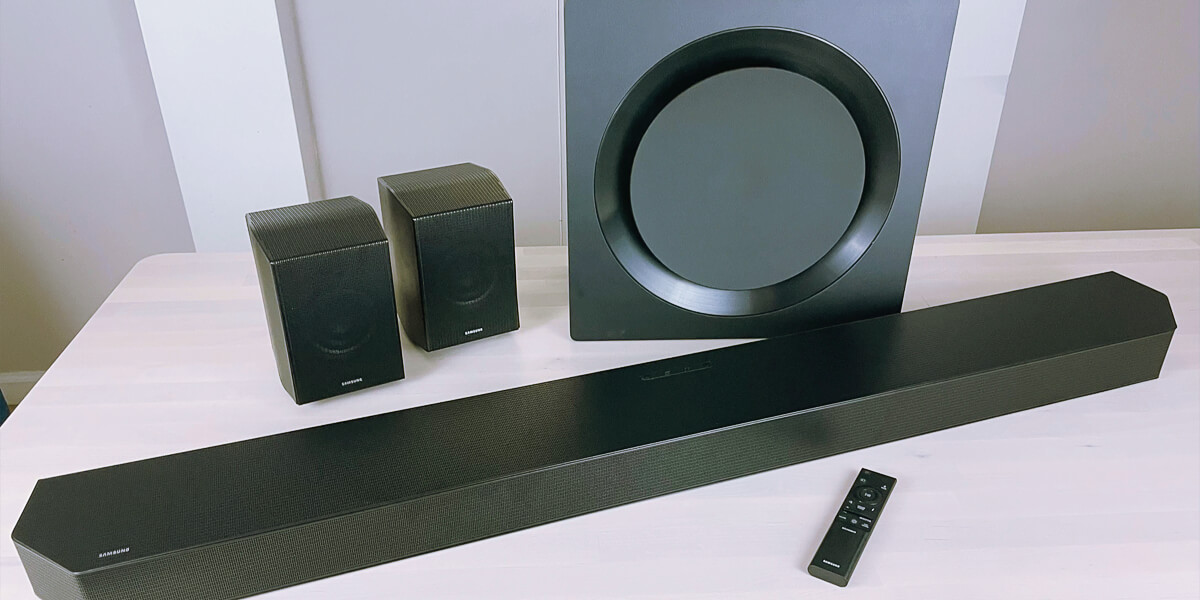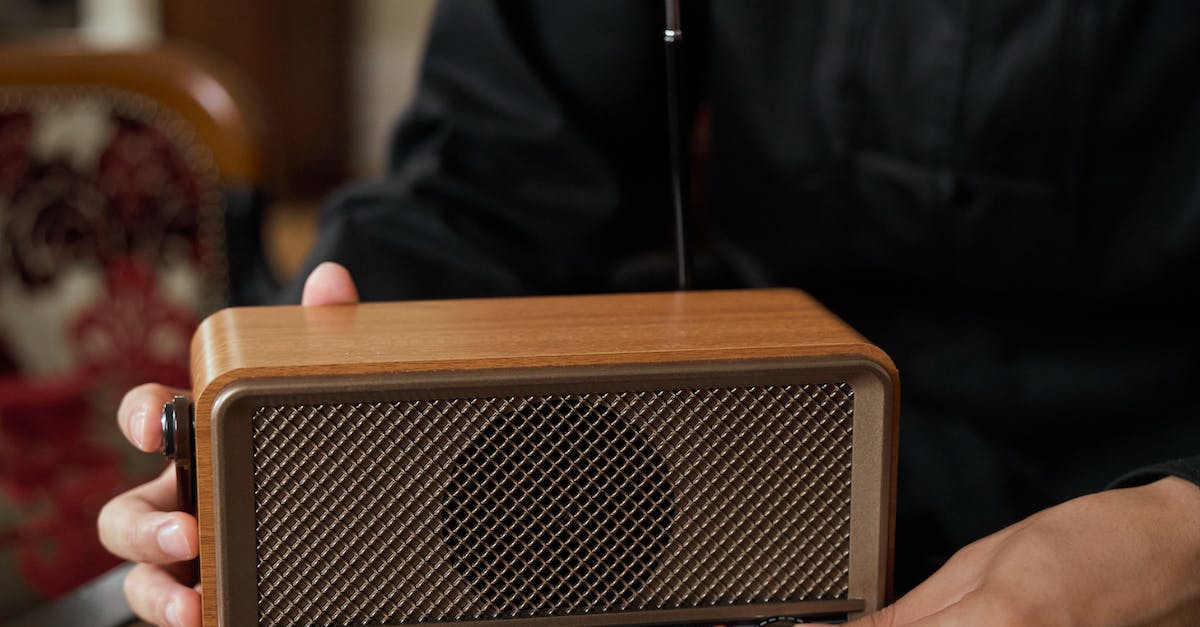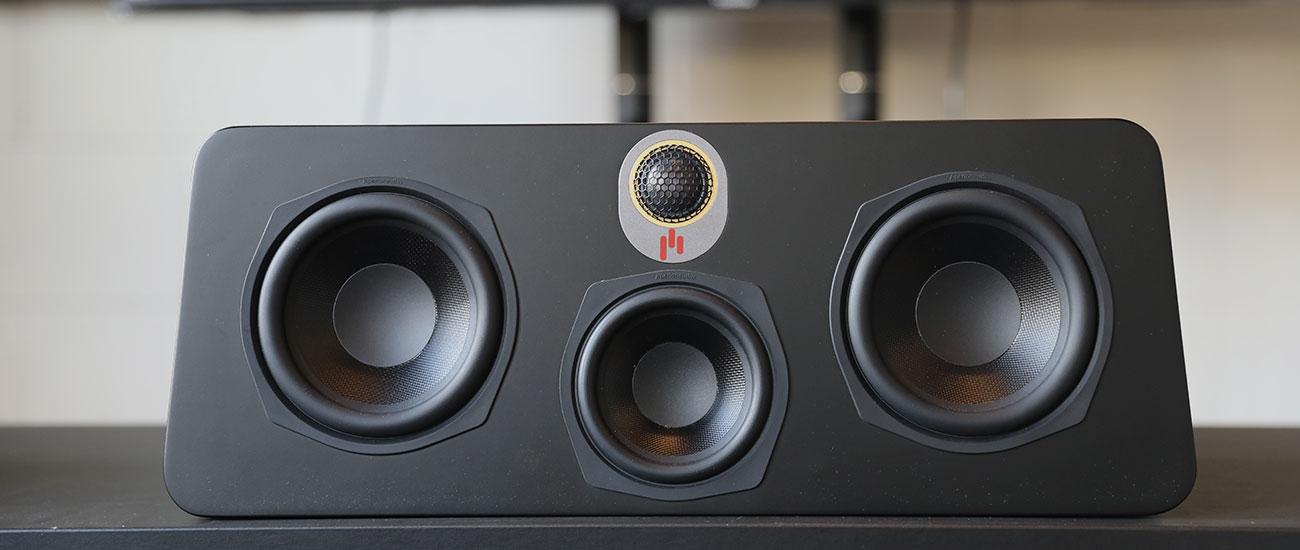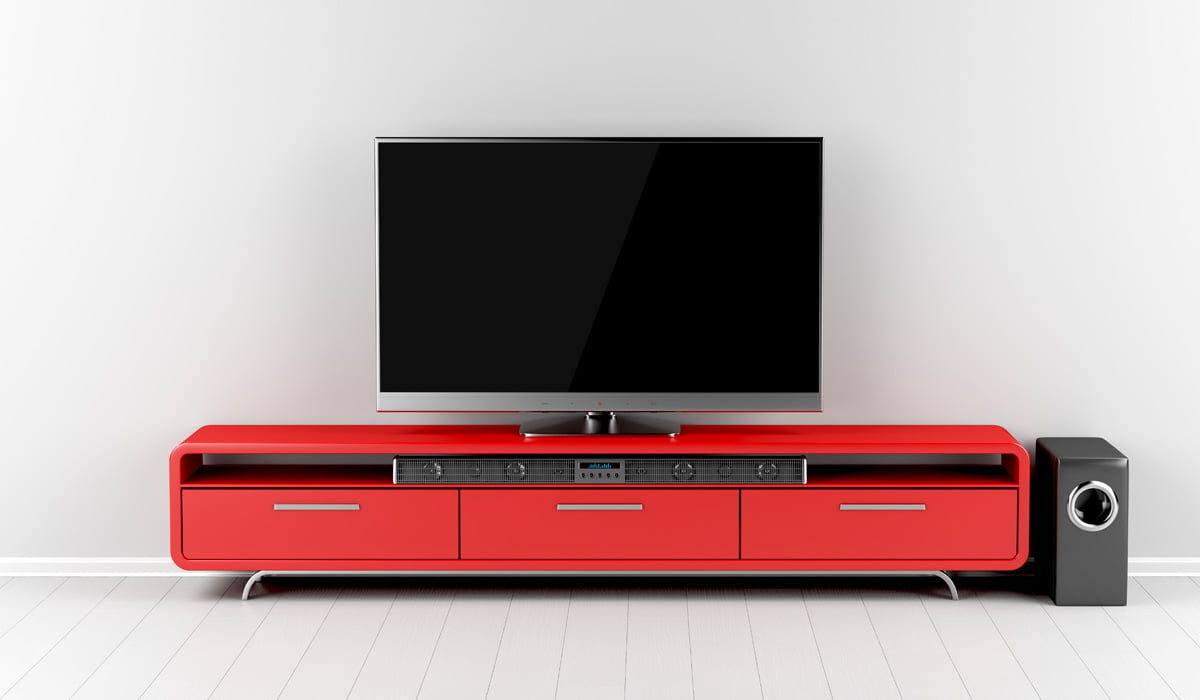Home>Production & Technology>Surround Sound>Why Does My Surround Sound Echo


Surround Sound
Why Does My Surround Sound Echo
Modified: January 22, 2024
Discover the reasons behind the echoing in your surround sound system and learn how to fix it. Enhance your audio experience with our tips and tricks.
(Many of the links in this article redirect to a specific reviewed product. Your purchase of these products through affiliate links helps to generate commission for AudioLover.com, at no extra cost. Learn more)
Table of Contents
Introduction
Surround sound systems have become a popular choice for home entertainment, providing an immersive audio experience that enhances movies, music, and gaming. However, one common issue that can arise with surround sound systems is echo. If you’ve noticed a lingering echo or reverberation when using your surround sound system, you’re not alone. Echo can be frustrating and diminish the overall quality of your audio experience.
In this article, we’ll explore why echo occurs in surround sound systems and discuss the various factors that contribute to this problem. We’ll also provide insights into how you can troubleshoot and fix echo issues, ensuring that you can enjoy crystal-clear audio without any unwanted echoes.
Before we dive into the causes and solutions, let’s have a basic understanding of what echo is in the context of surround sound systems. Echo refers to the reflection of sound waves off surfaces in a room, resulting in the perception of repeated audio signals. This repetition of sound can distort the original audio and make it sound muddled or distant.
While a certain degree of echo can occur naturally in any room, it becomes more prominent in surround sound systems due to the multiple audio channels and speakers involved. The complex speaker setup and room acoustics can exacerbate echo-related issues.
The causes of echo can vary, ranging from the size and shape of the room to the placement of speakers and even the audio settings. Understanding these causes is crucial to effectively troubleshooting and resolving the echo issue for an optimal audio experience.
Understanding Echo in Surround Sound Systems
Before we delve into the causes and solutions for echo in surround sound systems, it’s important to have a clear understanding of what exactly echo is and how it affects the audio experience. Echo, in the context of surround sound systems, refers to the reflected sound waves that bounce off surfaces in a room and reach our ears after the direct sound. This delay in sound arrival can create a perceived repetition of the audio, resulting in a muddled and less defined sound quality.
When we watch a movie or play a game with surround sound, we expect the audio to surround us and immerse us in the experience. However, if there is echo present, the audio can sound unnatural and disrupt the desired effect. It is essential to address and minimize echo to ensure a high-quality audio experience.
One key element that contributes to echo in surround sound systems is the size and shape of the room. Large empty rooms with flat, hard surfaces tend to create more echo compared to smaller, well-furnished rooms with soft materials that absorb sound. The reflective surfaces in a room, such as walls, ceilings, and floors, can cause sound waves to bounce and reverberate, leading to an echo effect.
Another factor that can cause echo is the placement of the speakers. Ideally, the speakers in a surround sound system should be positioned strategically to create an immersive audio environment. However, if the speakers are placed too close to reflective surfaces or in areas where sound waves can bounce excessively, it can result in unwanted echo. Proper speaker placement is crucial to minimize echo and achieve optimal sound quality.
Furthermore, the audio settings and calibration of the surround sound system also play a role in the presence of echo. Incorrectly configured audio settings, such as excessive reverb or incorrect channel levels, can contribute to echo. Calibrating the audio settings properly and ensuring that the surround sound system is optimized for the room’s acoustics can help reduce echo.
Understanding the various factors that contribute to echo in surround sound systems is essential for addressing and resolving the issue effectively. In the following sections, we will explore the specific causes of echo and provide guidance on troubleshooting and fixing echo-related problems in your surround sound system.
Causes of Echo in Surround Sound Systems
Echo in surround sound systems can be caused by a variety of factors, ranging from room acoustics to speaker placement and audio settings. Understanding these causes is crucial in order to effectively troubleshoot and address the echo issue. Let’s explore some of the common causes:
- Room Acoustics: The size, shape, and materials used in a room can greatly impact its acoustics. Large empty rooms with hard, reflective surfaces tend to generate more echoes compared to smaller, well-furnished rooms with soft, absorbent materials (such as carpets and curtains). The echo problem can be more noticeable in rooms with high ceilings or large windows. Improving room acoustics by adding acoustic panels or furniture can help absorb sound waves and reduce echo.
- Sound Reflection: Echo can occur when sound waves bounce off surfaces and reflect back to our ears. This can happen when speakers are placed too close to walls or other reflecting surfaces. The reflected sound waves can mix with the direct sound, leading to echo. It’s important to consider the distance and positioning of speakers to minimize sound reflections and reduce echo.
- Speaker Placement: Improper placement of speakers can contribute to echo issues. If the speakers are positioned too close to walls or corners, sound reflections can become more prominent, causing echo. Additionally, if the rear speakers in a surround sound system are not properly placed, it can result in an unbalanced audio experience and increase the chances of echo. Following proper speaker placement guidelines, as recommended by the manufacturer, can help minimize echo problems.
- Audio Settings: The audio settings and calibration of the surround sound system play a crucial role in the presence of echo. If the audio system is not adjusted properly, it can lead to excessive reverb or imbalanced audio signals, resulting in echo. Make sure to calibrate the audio settings according to your room’s acoustics and follow the manufacturer’s instructions for optimal sound quality.
By understanding these causes of echo in surround sound systems, you can now begin troubleshooting and finding the appropriate solutions. In the next sections, we will delve deeper into specific ways to minimize and eliminate echo in your surround sound system, ensuring a high-quality audio experience.
Room Acoustics and Echo
When it comes to echo in surround sound systems, room acoustics play a crucial role. The size, shape, and materials within a room can significantly impact the amount of echo present. Understanding how room acoustics contribute to echo can help in troubleshooting and finding solutions to minimize its effects.
Large empty rooms with hard and reflective surfaces are more prone to generating echo. When sound waves hit these surfaces, they bounce off and reflect back into the room, causing repetition and elongation of the sound. This can result in a muddy and less defined audio experience.
On the other hand, smaller rooms with soft and absorbent materials tend to have fewer echo issues. Carpets, curtains, and furniture can help absorb sound waves, reducing their reflection and minimizing echo. These materials act as sound absorbers, preventing the sound from bouncing back and distorting the audio quality.
To improve room acoustics and minimize echo, consider the following tips:
- Use acoustic panels: Install sound-absorbing panels on the walls to reduce sound reflections and minimize echo. These panels are designed to absorb sound waves, preventing them from bouncing back into the room.
- Add rugs and curtains: Cover hard floors with area rugs and hang curtains on windows to add more absorbent materials to the room. These soft materials can help diffuse sound waves and reduce echo.
- Furniture placement: Arrange furniture strategically to break up the reflection of sound waves. Placing bookshelves, sofas, and other furniture against walls can help disrupt the path of sound waves, reducing the potential for echo.
- Consider room dimensions: If possible, choose a room with dimensions that minimize echo. Square and rectangular rooms tend to create more echo, while irregularly shaped rooms can help diffuse sound waves and reduce the impact of echo.
By improving the acoustics of your room, you can create an environment that minimizes echo, allowing for a more enjoyable and immersive surround sound experience. Remember, the goal is to reduce reflective surfaces and introduce sound-absorbing materials into the space to mitigate the occurrence of echo.
Sound Reflection and Echo
Sound reflection is a major contributor to the echo experienced in surround sound systems. When sound waves emitted by speakers reach surfaces such as walls, floors, or furniture, they bounce off and can create unwanted echoes. Understanding how sound reflection occurs and how it affects the audio experience is crucial in troubleshooting and resolving echo issues.
When sound waves encounter a flat and hard surface, such as a wall, they bounce back at an angle equal to the angle of incidence. This means that if a speaker is positioned too close to a wall, the sound waves will hit the wall and reflect back towards the listener, causing an echo effect.
Not only do walls contribute to sound reflection, but other surfaces within the room can also play a role. For example, reflective floors, glass windows, or even furniture with hard surfaces can reflect sound waves and lead to echo. These reflected sounds can overlap with the direct audio coming from the speakers, resulting in a muddled and distorted sound.
To minimize sound reflection and subsequently reduce echo, here are some tips to follow:
- Speaker placement: Ensure that the speakers are positioned in a way that minimizes sound reflection. Keep speakers away from walls and corners to reduce the chances of sound waves bouncing back. Ideally, speakers should be placed at ear level and angled towards the listening area for optimal sound projection.
- Use sound-absorbing materials: Incorporate materials that absorb sound waves into your room décor. Carpets, rugs, and thick curtains can help reduce the amount of reflected sound, effectively reducing echo. Additionally, adding acoustic panels to the walls can further absorb sound and minimize reflection.
- Strategically arrange furniture: Positioning furniture strategically can help break up the path of sound waves and reduce the amount of reflection. Place furniture, such as bookshelves or sofas, between the speakers and the walls to disperse and absorb sound.
- Consider room layout: If possible, choose a room layout that minimizes sound reflection. Avoid square or rectangular rooms, as they tend to create more echo. Irregularly shaped rooms or rooms with angled walls can help diffuse sound waves and reduce the impact of reflection.
By taking these measures to minimize sound reflection, you can significantly reduce the occurrence of echo in your surround sound system. Remember, the goal is to reduce the amount of reflected sound and ensure that the direct audio from the speakers reaches your ears without interference, resulting in a clearer and more immersive audio experience.
Speaker Placement and Echo
The placement of speakers in a surround sound system plays a critical role in the presence or absence of echo. Incorrect speaker placement can contribute to sound reflections, resulting in unwanted echoes and a diminished audio experience. Understanding the importance of proper speaker placement is key to minimizing echo issues.
When setting up your surround sound system, follow these guidelines to optimize speaker placement:
- Main speakers: The main speakers, typically the front left and right speakers, should be positioned at ear level and equidistant from the listening area. Placing them too close to walls or corners can cause sound reflections and increase the chances of echo.
- Center speaker: The center speaker should be placed centrally, either above or below the TV, and angled towards the listener. This ensures that dialogue and central audio cues are clear and intelligible.
- Rear speakers: The rear speakers, typically the surround left and right speakers, should be positioned behind the listening area, ideally at ear level or slightly above ear level. Aim to create a sense of envelopment without overpowering the front speakers.
- Subwoofer: The subwoofer, responsible for low-frequency sounds, can be placed anywhere in the room. Experiment with different positions to find the spot that offers the best bass response without causing excessive vibrations or echoes.
- Avoid reflective surfaces: Position the speakers away from reflective surfaces, such as walls, windows, or glass cabinets, as they can cause sound reflections and subsequently increase echo. Aim for a clear path for the sound waves to reach the listener.
- Consider speaker isolation: When placing speakers on stands or shelves, consider using isolation pads or spikes to minimize vibrations. These can help prevent unwanted resonance and echoes caused by the speakers interacting with the surfaces they are placed on.
By following these speaker placement guidelines, you can minimize sound reflections and reduce the occurrence of echo in your surround sound system. Experimenting with different positions and angles can further refine the audio experience, ensuring balanced audio and a more immersive surround sound environment.
Remember, the key is to strike a balance between optimal speaker placement and avoiding sound reflections. Taking the time to properly position your speakers can greatly enhance the audio quality while reducing the impact of echo in your surround sound system.
Audio Settings and Echo
The audio settings of your surround sound system can have a significant impact on the presence of echo. Incorrectly configured audio settings can result in excessive reverb or unbalanced audio signals, leading to unwanted echoes and a compromised listening experience. Understanding how audio settings can contribute to echo is crucial in troubleshooting and resolving the issue.
Here are some key audio settings to consider when dealing with echo in your surround sound system:
- Room calibration: Many modern surround sound systems come with room calibration features that automatically adjust the audio settings based on the specific acoustics of your room. Follow the manufacturer’s instructions to ensure accurate calibration and minimize echo.
- Channel levels: Adjusting the volume levels of each speaker channel is essential for achieving proper audio balance. If one or more channels are set too high, it can result in an unbalanced audio mix, potentially leading to increased echo. Use the channel level settings on your surround sound system to fine-tune and optimize the audio output.
- Reverberation settings: Some audio systems offer control over the amount of reverb or simulated room ambiance. Excessive reverb can contribute to echo, making the audio sound distant and unfocused. Ensure that the reverberation settings are set to a level that enhances the audio without introducing excessive echo.
- Audio modes: Surround sound systems often offer different audio modes, such as stereo, cinema, or music. These modes may employ different processing techniques and equalization settings. Experiment with different modes to find the one that suits your listening preferences while minimizing echo.
- Equalizer adjustments: Use the equalizer settings on your surround sound system to fine-tune the sound frequencies. An imbalanced frequency response can contribute to audio reflections and echo. Adjusting the equalizer can help optimize the audio output and minimize echo issues.
Keep in mind that the specific audio settings and features available will vary depending on your surround sound system. Consult the user manual or online resources provided by the manufacturer for detailed instructions on how to adjust the audio settings effectively.
By carefully configuring the audio settings of your surround sound system, you can minimize echo and achieve the best possible audio experience. Experimentation and fine-tuning may be necessary to find the optimal settings for your room and personal preferences. Remember that striking a balance between enhancing audio quality and reducing echo should be your goal when adjusting the audio settings of your surround sound system.
Troubleshooting and Fixing Echo in Surround Sound Systems
Experiencing echo in your surround sound system can be frustrating, but the good news is that it can usually be resolved by following a few troubleshooting steps. Here are some effective methods for troubleshooting and fixing echo issues in your surround sound system:
- Reposition speakers: Start by adjusting the placement of your speakers. Move them away from reflective surfaces, such as walls, windows, or glass cabinets. Experiment with different positions and angles to find the placement that minimizes sound reflections and reduces echo.
- Use sound-absorbing materials: Incorporate sound-absorbing materials into your room, such as area rugs, carpets, curtains, or acoustic panels. These materials can help absorb sound waves, minimize reflections, and reduce echo.
- Calibrate room acoustics: Utilize the room calibration feature of your surround sound system, if available. This feature measures the acoustics of your room and adjusts the audio settings accordingly. Follow the instructions provided by the manufacturer to perform an accurate calibration and minimize echo.
- Adjust audio settings: Fine-tune your audio settings, including the channel levels, reverberation settings, and equalizer settings. Ensure that the audio output is properly balanced and free from excessive reverb or imbalanced frequencies that can contribute to echo.
- Check speaker wiring: Verify that all speaker wires are securely connected to your surround sound system. Loose or faulty connections can introduce audio distortions, including echo. Double-check the wiring and make any necessary adjustments or replacements.
- Consider acoustic treatments: If you’re still experiencing significant echo issues, consider using additional acoustic treatments in the room. Bass traps, diffusers, or additional acoustic panels can further absorb sound waves, reduce reflections, and improve the overall sound quality.
It’s important to note that resolving echo issues may require a combination of these troubleshooting steps. Experimentation and fine-tuning may be necessary to find the solution that works best for your specific surround sound system and room setup.
If all else fails, consider consulting a professional acoustician or audio specialist who can assess your room’s acoustics and provide tailored solutions for minimizing echo in your surround sound system.
By following these troubleshooting methods, you can effectively minimize and potentially eliminate echo, enhancing your surround sound experience and enjoying crystal-clear audio without any unwanted echoes.
Conclusion
Dealing with echo in a surround sound system can be a frustrating experience, but with the right understanding and troubleshooting techniques, it is possible to minimize and resolve echo issues. By addressing the various factors that contribute to echo, such as room acoustics, sound reflection, speaker placement, and audio settings, you can achieve a clear and immersive audio experience.
Understanding that room acoustics play a crucial role in echo, you can take steps to improve the acoustic properties of your room. Adding sound-absorbing materials, such as carpets, curtains, and acoustic panels, can help absorb sound waves and reduce reflections, minimizing echo in the process.
Proper speaker placement is also essential in minimizing echo. By positioning speakers away from reflective surfaces and following the recommended guidelines for optimal placement, you can reduce sound reflections and consequently reduce echo.
Adjusting the audio settings of your surround sound system is another important step in addressing echo issues. Calibration, channel levels, reverberation settings, and equalizer adjustments can all contribute to minimizing or exacerbating echo. Fine-tuning these settings according to the specific acoustics of your room will help achieve a balanced and echo-free audio experience.
If echo persists, troubleshooting methods such as checking speaker wiring or considering additional acoustic treatments can further help in resolving the issue. Seeking professional assistance from acousticians or audio specialists may also be beneficial for more complex situations.
By implementing these strategies and being patient with the troubleshooting process, you can overcome echo in your surround sound system and enjoy a high-quality audio experience that truly immerses you in your favorite movies, music, and games.
Remember that every room and surround sound system is unique, so it may take some time and experimentation to find the perfect combination of techniques that work best for your specific setup. With perseverance and a focus on optimizing room acoustics, speaker placement, and audio settings, you can achieve the ultimate surround sound experience without the distraction of echo.











